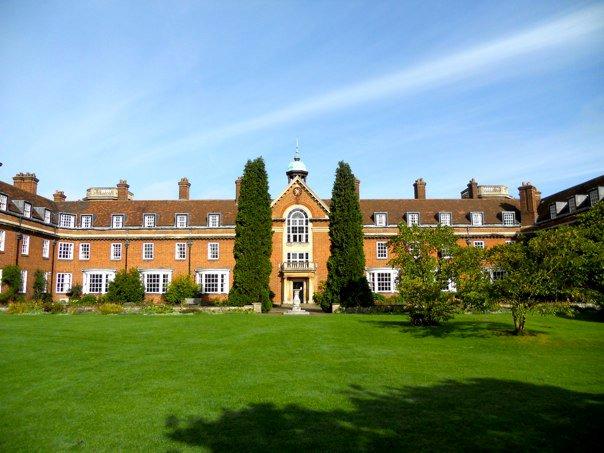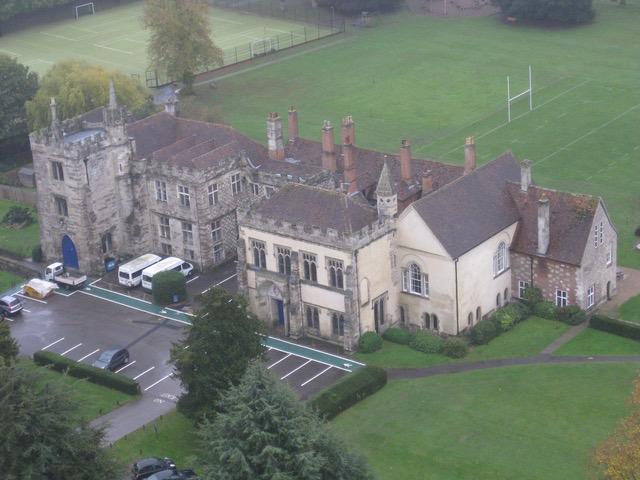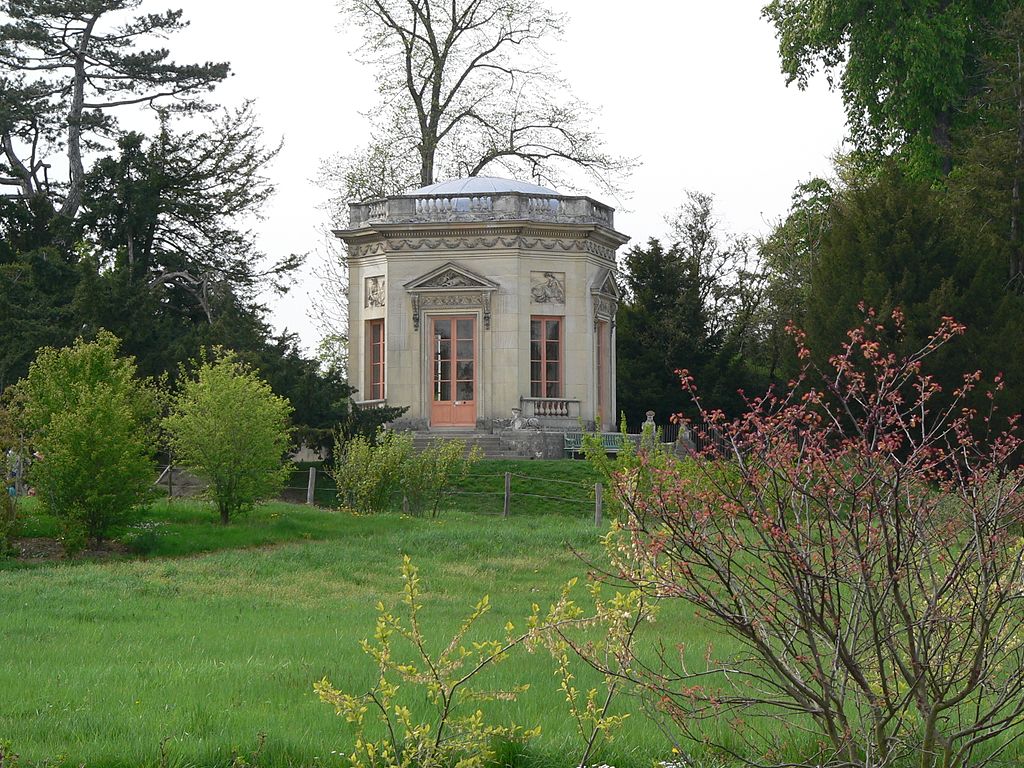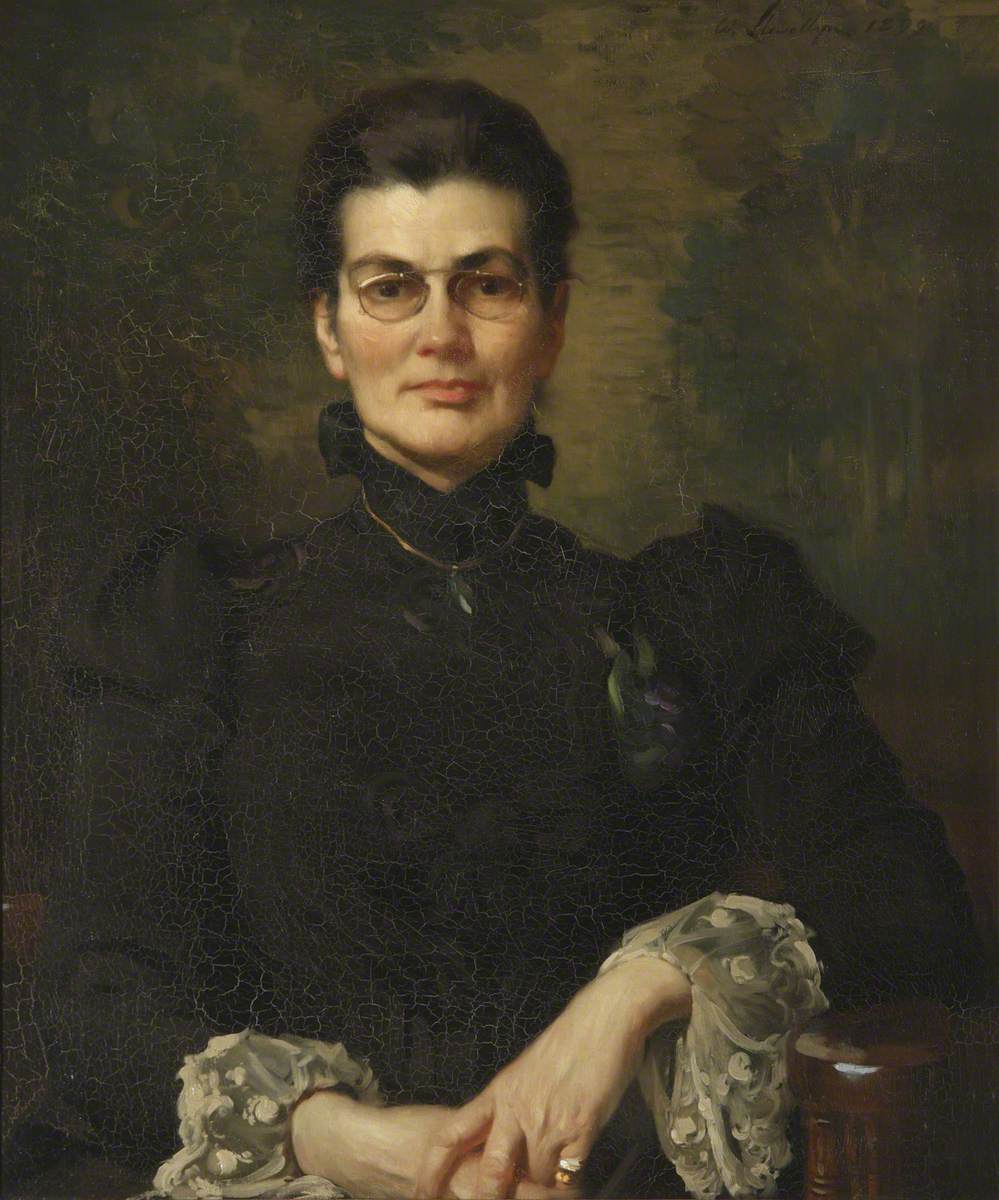Charlotte Anne Elizabeth Moberly (known as Annie) 1846–1937
Portrait by Samuel Henry William Llewellyn St Hugh’s College University Of Oxford
Annie was the daughter of George Moberly, Bishop of Salisbury, and she lived in Salisbury’s Cathedral Close for 20 years. Later in life she worked tirelessly to overcome the barriers to poorer women accessing higher education in Oxford. Annie became the first Principal of St Hugh’s College in Oxford for women and laid the foundations for the large Oxford college it is today.

Annie was born in Winchester and lived in the grounds of Winchester College where her father was headmaster. She was the tenth of fifteen children and was educated at home but benefitted from learning music from the school’s organist and sharing lessons with her brothers.
In 1869 her father became Bishop of Salisbury, and Annie became his secretary. In this religious environment, Annie met with bishops and archbishops but also the local parish clergy, discussing local affairs with her father. Life in the Close was cultured and artistic and it was one of the most musical places in England during this time. Annie and the family hosted regular musical parties and formed a society of amateur musicians living in the Avon Valley.

Annie’s father died in 1885, and within months she was invited by Elizabeth Wordsworth to take charge of St Hugh’s Hall in Oxford, and became its first Principal. Elizabeth was the sister of the new Bishop of Salisbury and Principal of Lady Margaret Hall in Oxford (for women); she founded St Hugh’s Hall in 1886 as a place for poorer young women to gain an Oxford education and the focus was to encourage the less well-off daughters of Anglican Clergymen to attend, as the fees were lower in comparison to other colleges. The Hall began as a semi-detached house with four women students.
Annie’s credentials earned the confidence of parents who would not normally consider further education for their daughters. Under her leadership the numbers of female students at St Hugh’s Hall increased, and it was renamed St Hugh’s College. The college has a radical tradition: during its early years it had an active role in the women’s suffrage movement in Oxford and was part of the Oxford Women’s Suffrage Society. A banner was commissioned for the King’s Coronation procession in 1911 and St Hugh’s College and Annie contributed to the fund. Although women had been studying at Oxford since the 1870s, they were not formally recognised as being members of the university or awarded degrees. After much campaigning from members of the university and educational reformers, a significant moment in the history of women’s education in Oxford occurred in 1920, when degrees were finally open to women. In this year, Annie was awarded an honorary MA, and all of the principals of the women’s colleges as well as former students and other notable women involved in the movement were matriculated. Today St Hugh’s college is one of the largest colleges at Oxford, with around 800 students, and the college states that ‘Many of its alumni have been trailblazers for female achievement in their respective fields’.

Annie wrote several books, some under the name Elizabeth Morison1, but she became best known for co-writing a ghost story based on an incident where she believed she had travelled back in time: in 1901, she visited the Palace of Versailles in Paris with a friend and fellow academic, Eleanor Frances Jourdain. Both claim they saw Marie Antoinette sitting in the gardens in 1790. In 1911 they published a book based on this story called ‘An Adventure’ using pen names, which became a best-seller, however their identities were later discovered. These claims of time travel by two Oxford academics caused a sensation and the incident was debated by scientists and scholars over many years. In 1981, the story was made into a TV movie titled Miss Morison’s Ghosts.
Annie also claimed to have seen ‘large, spectral white birds’ in the garden of the Bishop’s Palace hours after the death of her father. There is an authenticated tradition in Salisbury that large white birds fly overhead when the Bishop dies.
Annie remained involved in St Hugh’s College even after her retirement, and was a member of the College Council until her death in 1937.
Researched and written by Helen Marston.
Some content within this profile has been adapted from the guided walk ‘Her Salisbury Footprint’ given by Sarah Maloney at the project’s launch event on 8th March 2020.
Edited by S. Ali.
Notes:
1The following books were published under the name Elizabeth Morison: Signposts (1-12, 1928), Simple Meditations and Intercessions on the Stations of the Cross (1931).
Sources
Art UK (nd.) Charlotte Anne Elizabeth Moberly. https://artuk.org/discover/artworks/charlotte-anne-elizabeth-moberley-18461937-principal-18861915-223593
Hampshire Archives Trust (n.d.) Annie Moberly-3 https://hampshirearchivestrust.co.uk/archive/introduction-to-archives/the-importance-of-archives-case-studies/annie-moberley/annie-moberley-3/ Accessed November 2020
Howells, Jane & Newman, Ruth (2018). Women in Salisbury Cathedral Close, Sarum Studies 5. Hobnob Press.
Howarth, Janet (2004). Moberly, Charlotte, Anne, Elizabeth [Annie] (1846-1937). Oxford Dictionary of National Biography. https://www.oxforddnb.com/view/10.1093/ref:odnb/9780198614128.001.0001/odnb-9780198614128-e-48453.
Olivier, Edith (1945). Four Victorian Ladies of Wiltshire. Faber & Faber.
St Hugh’s College (2021). www.st-hughs.ox.ac.uk
University of Oxford Faculty of History (2020). A short history of Women’s Education at the University of Oxford. https://www.history.ox.ac.uk/article/a-short-history-of-womens-education-at-the-university-of-oxford
Victoria County History (1954). St Hugh’s College. A History of the County of Oxford: Volume 3, the University of Oxford. Eds H. E. Salter, and Mary D. Lobel. British History Online. https://www.british-history.ac.uk/vch/oxon/vol3/pp347-348
Wikipedia (2021). Moberly-Jourdain incident. https://en.wikipedia.org/wiki/Moberly–Jourdain_incident

